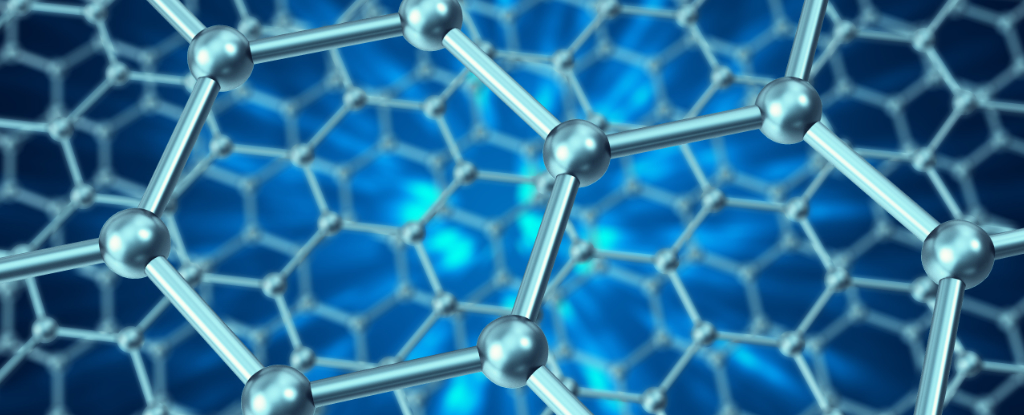Forced to run a labyrinth of carbon atoms uniquely arranged in twisted stacks, electrons do some rather peculiar things.
Researchers from the University of British Columbia in Canada, the University of Washington and Johns Hopkins University in the US, and the National Institute for Materials Science in Japan recently discovered a strange new state of matter in the dynamics of currents flowing through layers of graphene.
The findings confirm predictions on how electrons ought to behave when squeezed into crystalline arrangements, and may contribute fresh ideas on how to achieve reliable approaches to quantum computing or reveal ways to develop room-temperature superconduction.
“The starting point for this work is two flakes of graphene, which are made up of carbon atoms arranged in a honeycomb structure,” says the study’s senior author Joshua Folk, a condensed matter physicist at the University of British Columbia.
“The way electrons hop between the carbon atoms determines the electrical properties of the graphene, which ends up being superficially similar to more common conductors like copper.”
Graphene has been increasingly seen as something of a wonder material over recent decades, its lattice of carbon atoms connected in a way that leaves spare electrons to leap about like tokens in a game of quantum checkers.
Physicists have consistently bent the rules of this game, finding new and unusual ways to alter properties of resistance or coordinate into exotic states. For these reasons, graphene has become a perfect playground to search for clues on low-resistance conductivity or test the boundaries of various quantum effects.
One such effect is a ‘freezing’ of electrons into restricted positions, effectively turning them from a flowing liquid-like mass into something with structure. Known as a Wigner crystal, this phase of electrons has characteristic shapes and behaviors researchers thought they understood well.
In this run of experiments, the researchers twisted stacks of single-atom sheets of graphene in a way that forced the unbonded carbon atoms to align in what’s described as a moiré (pronounced mwa-ray) effect.
Moiré effects aren’t hard to find in our day-to-day world. Seen in stacks of mesh or screens, they appear as repeating lines, circles, or curves as contrasts in darkness and light making up the mesh combine or cancel.
Only in this case, the contrasting structures in the twisted graphene play havoc with the electron’s geometry, or what is referred to as the topology of its landscape. The result is a shift in the electron’s speed, with some even developing a twist as they move along the edges of the material.
“This leads to a paradoxical behavior of the topological electronic crystal not seen in conventional Wigner crystals of the past – despite the crystal forming upon freezing electrons into an ordered array, it can nevertheless conduct electricity along its boundaries,” says Folk.
It’s in this bizarre new realm of electron behavior that strange activities emerge, such as the quantization of resistance known as the quantum Hall effect.
New states of topological activity like this are a potential gold mine for physicists keen to explore ways to create quantum computing units known as qubits that are more resistant than the conventional sorts based on fundamental particles.
Contorting narrow stacks of graphene into the electron equivalent of a Möbius strip might only be the start. Geometry on this scale is theorized to deliver a bizarre zoo of electron quasiparticles with all kinds of twisted new physics.
This research was published in Nature.





